
Depois de quase dois meses de preparação e filmagens, o "Programa Marítimo de Guangdong" concluiu com êxito as suas dez curtas-metragens, com a maioria delas a entrar agora na fase de pós-produção, prontas para o seu lançamento oficial em outubro.
Patrocinado pelo Yangcheng Evening News Group, o Programa de Apoio a Jovens Realizadores Marítimos de Guangdong 2023 (também conhecido como "Programa Marítimo de Guangdong") iniciou as suas inscrições em abril deste ano. Em julho, destacaram-se seis finalistas seleccionados e quatro recomendações especiais do júri. Dez jovens realizadores receberam um fundo de apoio de 1,6 milhões de yuan para produzir dez curtas-metragens com temas relacionados com a cultura Lingnan e histórias chinesas ultramarinas.
Durante o verão, dez equipas de filmagem embarcaram na sua viagem por Guangzhou, Hong Kong, Jiangmen, Zhanjiang, Yingde, Taishan, Shantou, Chaozhou, Meizhou, bem como pela cidade de Ho Chi Minh e Can Tho, no Vietname. Desde a seleção do elenco e da localização até às filmagens, os jovens realizadores transformaram gradualmente as suas histórias conceptuais em narrativas visuais. Os desafios e surpresas com que se depararam durante as filmagens aprofundaram a sua ligação à terra e a sua compreensão da linhagem e das saudades de casa.
Escalada de montanhas, travessia de mares e viagens ao estrangeiro para descobrir inúmeros locais maravilhosos
Após o anúncio dos realizadores seleccionados em julho, dez jovens realizadores mergulharam num intenso trabalho de preparação. Com um enorme esforço de prospeção de locais, esforçaram-se por encontrar as cenas de filmagem mais adequadas para as suas histórias. O filme "The River that Holds My Hand", que se passa na região de Chaoshan e no Vietname, levou o realizador Jianhang Chen a percorrer a cidade de Ho Chi Minh e Can Tho, no Vietname, bem como Chaozhou, Meizhou e Shantou, na China, durante quase um mês de filmagens.
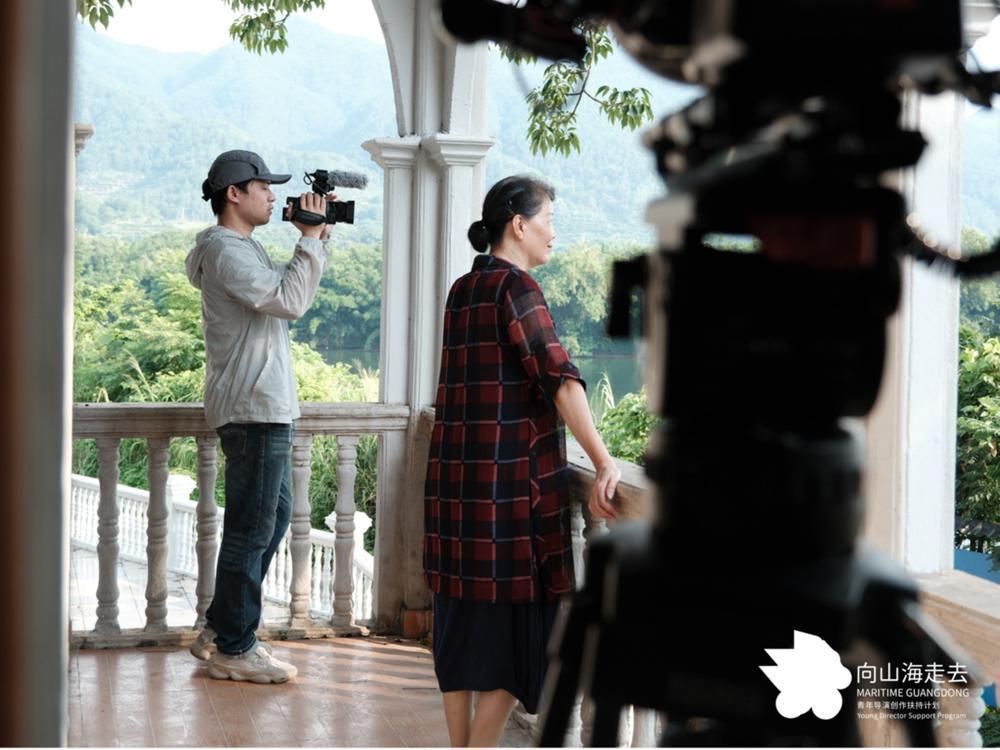
"How Can I Rid My Mind of Her", outro filme que gira em torno de chineses ultramarinos, passou quase meio mês a fazer pesquisa preliminar e a procurar locais de filmagem. O realizador Wenli Huang visitou o Museu Yinghong, a Fábrica de Chá Hongqi, as aldeias onde se encontram os retornados vietnamitas e as praias costeiras de Shantou, para encontrar o cenário ideal para a história.

Durante o processo de prospeção, as equipas descobriram numerosos locais deslumbrantes, desconhecidos do público. Estes locais, ricos em características e património de Lingnan, estão preparados para surpreender no grande ecrã. O filme "Fantasy Blues of 'Gua Ling'", de Charlotte Chen, foi filmado na antiga aldeia de Gualing, no distrito de Zengcheng, em Guangzhou, que conta com uma história de quase 600 anos. As torres de vigia da aldeia, as casas antigas, os becos antigos, as figueiras-de-bengala e os salões ancestrais foram todos captados no filme.
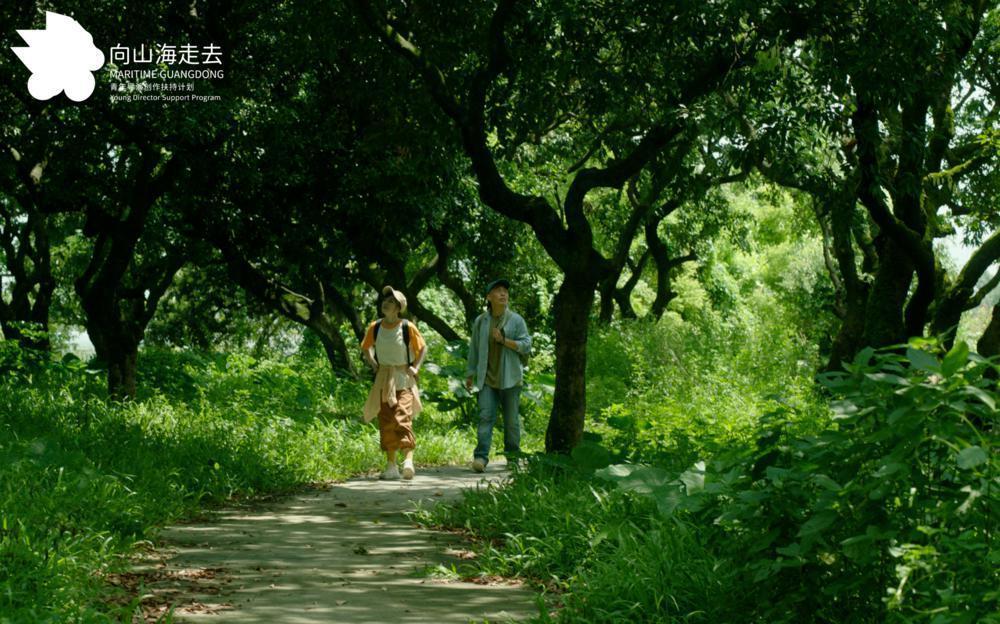
"The Returning Island" escolheu o Templo Antigo de Heping Tianhou, na cidade de Shantou, construído durante a dinastia Song, como principal local de filmagem. A realizadora, Canjie Zhuang, diz que o filme está fortemente impregnado de elementos da cultura Mazu. O templo, com os seus ricos antecedentes históricos e o seu estilo arquitetónico distinto, é, sem dúvida, um excelente cenário criativo.
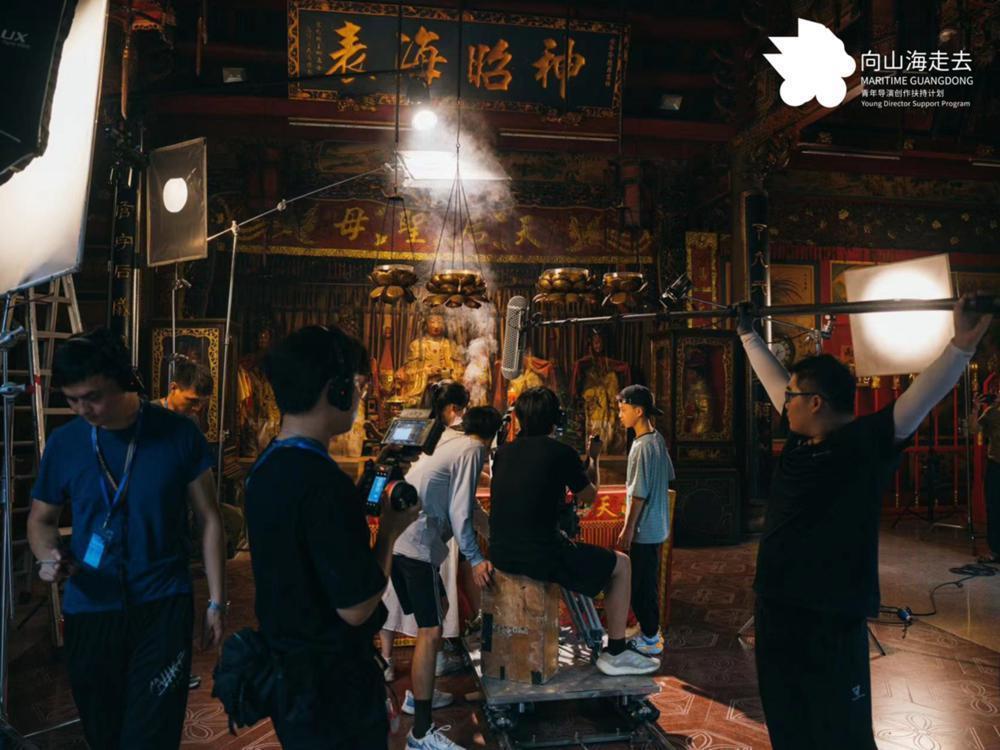
As dez equipas filmaram durante os meses de julho e agosto. Confrontados com o clima inconstante do verão meridional, os realizadores aperfeiçoaram as suas capacidades de adaptação espontânea. Especialmente no final de agosto, com a passagem do tufão Saola, duas filmagens em ilhas para "Swimming Lesson" e "Migratory Bird" foram muito afectadas.
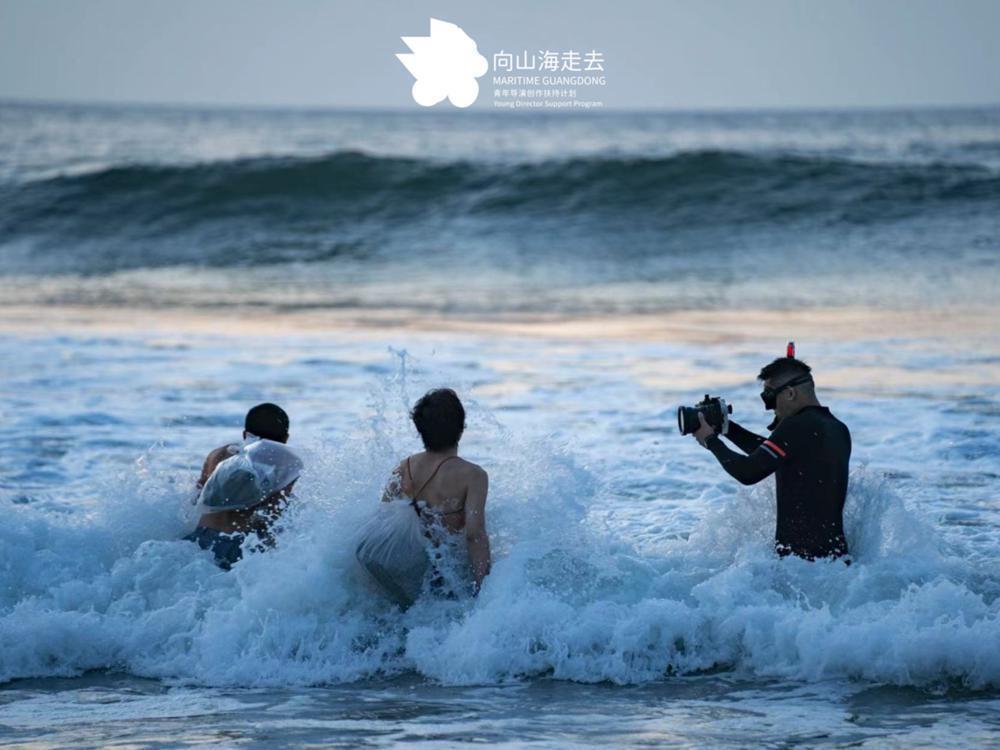
"Swimming Lesson" foi filmado na ilha de Shangchuan, em Taishan, Guangdong. O realizador, Holmes Deng, comprimiu o programa de filmagens em três dias, terminando-o pouco antes da chegada do tufão. "Migratory Bird" foi filmado em vários locais em Yuen Long e no distrito das Ilhas, em Hong Kong. Su chak Long revelou que ajustou alguns desenhos do enredo às condições climatéricas durante as filmagens, unificando o ambiente geral do filme com o ambiente de rodagem. Para além do storyboard original, também filmaram vários planos improvisados, captando muitos momentos inesperados.
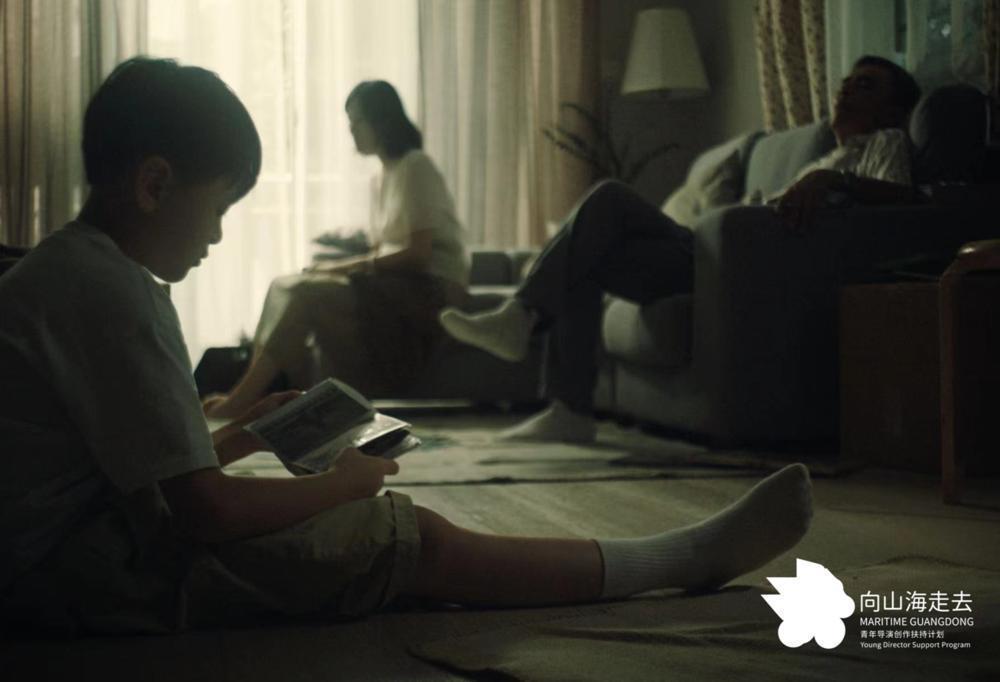
Perspectivas e estilos diversos: Reinterpretação da cultura Lingnan através do cinema
O Programa Maritime Guangdong dedica-se a identificar jovens realizadores com uma visão única da cultura Lingnan e da cultura chinesa ultramarina da Grande Baía de Guangdong-Hong Kong-Macau, apoiando a criação de curtas-metragens relacionadas. Cada um dos dez jovens realizadores trouxe uma perspetiva e um estilo únicos, fazendo do "Maritime Guangdong Program" uma rica tapeçaria de vozes e visões.
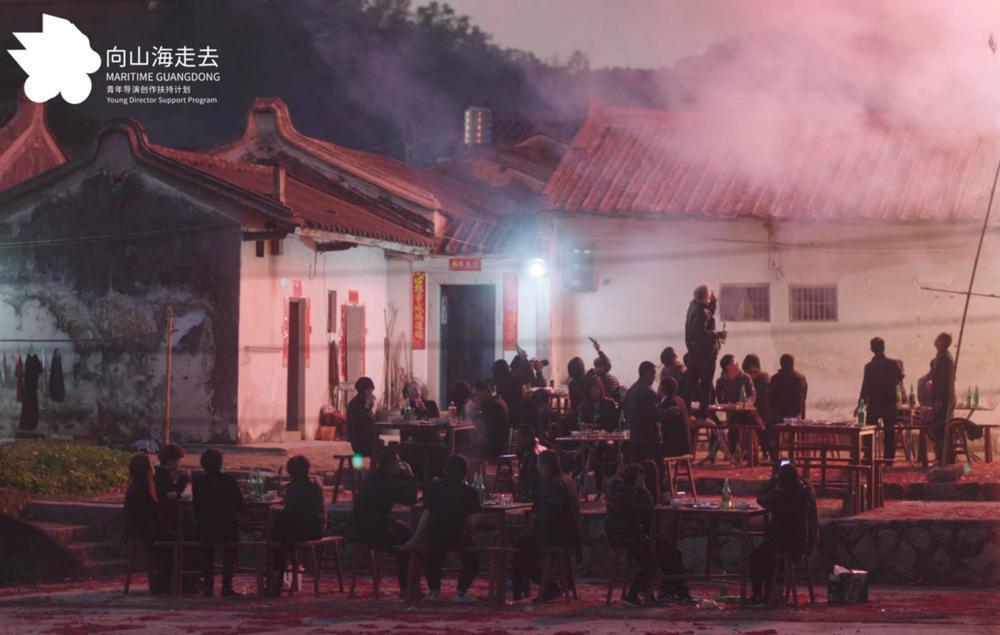
A maioria dos dez melhores jovens cineastas nasceu e reside na área da GBA, com várias origens ancestrais que abrangem locais como Shenzhen, Chaozhou, Shantou, Zhanjiang, Qingyuan e Hong Kong. No que respeita aos seus empreendimentos criativos, alguns escolhem o caminho do "regresso" para narrar histórias familiares em cenários familiares. Por exemplo, o realizador Paco Wen, oriundo da região de Chaoshan, capta a essência das suas saudades de casa e da avó na curta-metragem "Reunited". Entretanto, a curta-metragem do realizador Adam Yang, "My Brother", inspira-se no seu avô e no seu primo, enquanto o protagonista embarca numa viagem para encontrar a ligação entre Shantou e Hong Kong, levando o público a contemplar o conceito de "raízes". O realizador Jiacao Chen revisita a sua infância em Leizhou, Zhanjiang, criando a sua obra "The Puppetmaster", que, pela primeira vez, explora a ópera local como tema, tecendo a história de um viajante que procura as suas raízes.
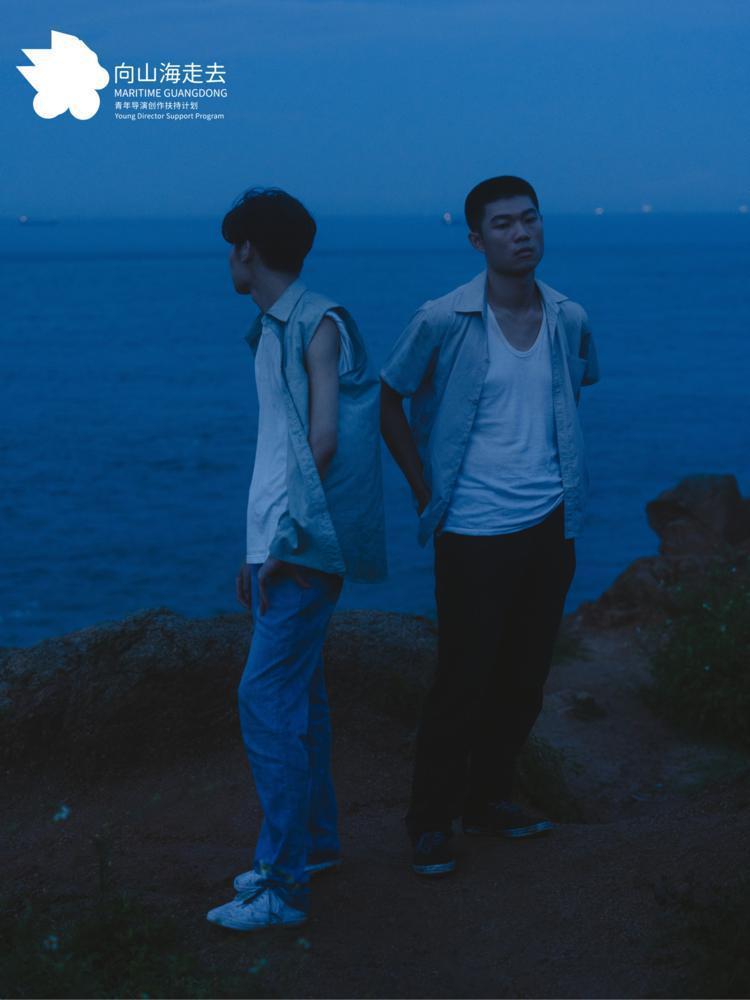
Por outro lado, há também quem opte por "entrar de rompante" para procurar inspiração fresca a partir da perspetiva de um estranho. Um exemplo típico é o facto de a equipa de "Bring Him Back" ser toda de Shenzhen, mas ter decidido filmar uma comédia entre avô e neto na cidade desconhecida de Jiangmen. Outra realizadora, Charlotte Chen, que filma "Fantasy Blues of'Gua Ling'", veio para Guangdong mais tarde e achou a pitoresca e misteriosa aldeia de Gua Ling cativante, levando-a a criar uma história surreal e fantástica.

Quer seja de "regresso" ou de "entrada", as experiências de filmagem do "Programa Marítimo de Guangdong" criaram uma ligação mais estreita entre os realizadores e os locais de filmagem, proporcionando-lhes uma compreensão mais profunda da cultura chinesa de Lingnan e do estrangeiro. O realizador Adam Yang, de "My Brother", mergulhou no estilo de vida local de Chaoshan durante o processo de filmagem, afirmando: "Apaixonaram-se por andar de mota Suzuki, aprenderam a jogar mahjong de Guangdong, tiraram belas fotografias à beira-mar e saborearam o bife quente de Chaoshan. É este o significado que os filmes nos trazem, e é também o significado de 'My Brother' na procura de raízes". O realizador Huizhi Deng, de Shenzhen, encontrou muitos momentos comoventes em Jiangmen durante as filmagens de "Bring Him Back", dizendo: "Percorrendo as ruas da desconhecida Jiangmen, ficámos comovidos com as janelas coloridas da arquitetura chinesa ultramarina, bem como com as cenas dos avós a cantar karaoke debaixo da ponte e das crianças a correr na aldeia chinesa ultramarina. O nosso desejo de criar tornou-se assim ainda mais fervoroso"
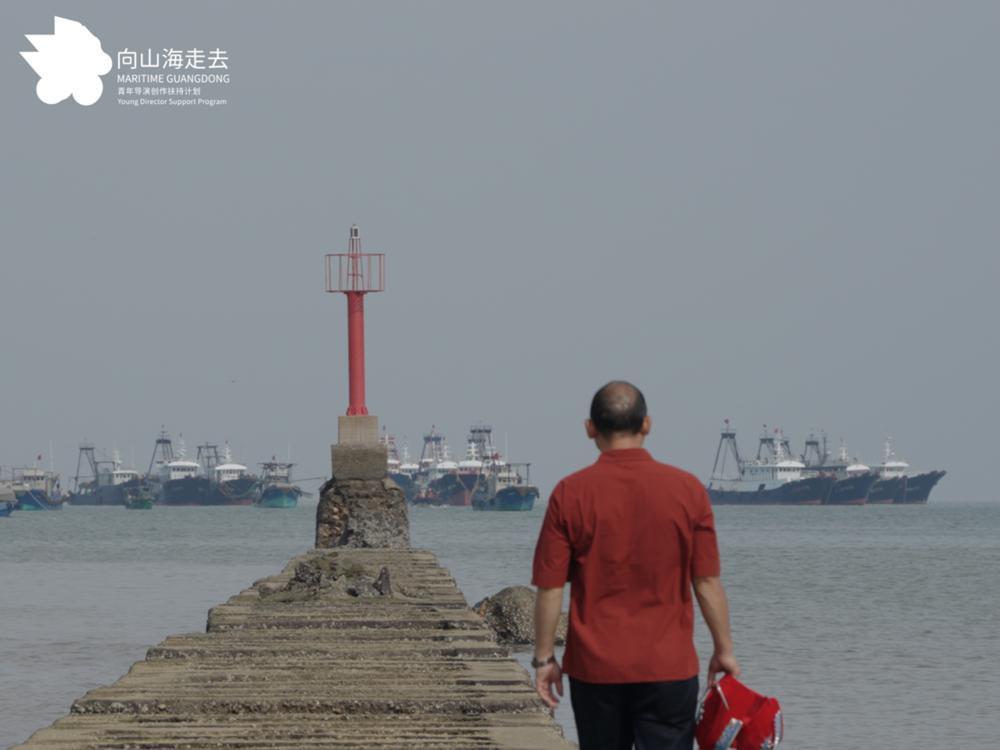
After almost two months of preparation and filming, the "Maritime Guangdong Program" has successfully wrapped up its ten short films, with most of them now entering the post-production phase, ready for their official launch in October.
Sponsored by the Yangcheng Evening News Group, the 2023 Maritime Guangdong Young Director Support Program (also known as the "Maritime Guangdong Program") started its registration in April this year. And in July, six selected finalists and four special recommendations from the jury stood out. Ten young directors were awarded a support fund of 1.6 million yuan to produce ten short films themed around Lingnan culture and overseas Chinese stories.
Over the summer, ten film crews embarked on their journey across Guangzhou, Hong Kong, Jiangmen, Zhanjiang, Yingde, Taishan, Shantou, Chaozhou, Meizhou, as well as Ho Chi Minh City and Can Tho in Vietnam. From casting and location scouting to filming, the young directors gradually transformed their conceptual stories into visual narratives. The challenges and surprises they encountered during filming deepened their connection to the land and their understanding of bloodline and homesickness.
Mountain-climbing, sea-crossing, and journeying abroad to unearth numerous wonderful locations
Following the announcement of the selected directors in July, ten young directors plunged into intense preparation work. With a tremendous effort in location scouting, they strove to find the most suitable shooting scenes for their stories. "The River that Holds My Hand," which is set in the Chaoshan region and Vietnam, saw director Jianhang Chen's footprints spanning Ho Chi Minh City and Can Tho in Vietnam, as well as Chaozhou, Meizhou, and Shantou in China to shoot during the nearly one-month filming.
"How Can I Rid My Mind of Her",another film revolving around overseas Chinese, spent almost half a month on preliminary research and location scouting. Director Wenli Huang visited the Yinghong Museum, the Hongqi Tea Factory, Villages where Vietnamese returnees are located, and coastal beaches in Shantou for an ideal story setting.
During the scouting process, numerous stunning locations, unknown to the public, were unearthed by the crews. These places, rich in Lingnan characteristics and heritage, are set to astonish on the big screen. Charlotte Chen's "Fantasy Blues of 'Gua Ling'" was filmed in Gualing Ancient Village in Guangzhou's Zengcheng District, which boasts a history of nearly 600 years. The village's watchtowers, ancient houses, old alleys, banyan trees, and ancestral halls were all captured in the film.
"The Returning Island" chose Shantou City's Heping Tianhou Ancient Temple, which was built during the Song Dynasty, as its main filming location. The director, Canjie Zhuang, said that the film is heavily infused with Mazu culture elements. The temple, with its rich historical background and distinctive architectural style, unquestionably makes an excellent creative setting.
All ten crews filmed during July and August. Confronting the fickle weather of the southern summer, the directors honed their skills to adapt spontaneously. Particularly at the end of August, as Typhoon Saola struck, two shooting on islands for "Swimming Lesson" and "Migratory Bird" were greatly affected.
"Swimming Lesson" was filmed on Shangchuan Island in Taishan, Guangdong. The director, Holmes Deng, compressed the filming schedule into three days, wrapping up just before the typhoon made landfall. "Migratory Bird" was shot in various locations in Yuen Long and Islands District in Hong Kong. Su chak Long revealed that he adjusted some plot designs to match the weather conditions during filming, unifying the overall mood of the film with the shooting environment. Apart from the original storyboard, they also filmed numerous improvised shots, capturing many unexpected moments.
Diverse perspectives and styles: Reinterpreting Lingnan culture through filmmaking
The Maritime Guangdong Program is dedicated to identifying young filmmakers with unique insights into Lingnan culture and the Overseas Chinese culture of the Guangdong-Hong Kong-Macao Greater Bay Area by supporting the creation of related short films. The ten young directors each brought a unique perspective and style, making the"Maritime Guangdong Program" a rich tapestry of voices and visions.
The majority of the top ten young filmmakers were born and reside in the GBA area with various ancestral origins spanning locations such as Shenzhen, Chaozhou, Shantou, Zhanjiang, Qingyuan, and Hong Kong. When it comes to their creative endeavors, some choose a path of "returning" to narrate familiar stories in familiar settings. For instance, director Paco Wen, hailing from the Chaoshan region, captures the essence of his homesickness and longing for his grandmother in the short film "Reunited". Meanwhile, director Adam Yang's short film "My Brother" draws inspiration from his grandfather and cousin, as the protagonist embarks on a journey to find the connection between Shantou and Hong Kong, prompting the audience to contemplate the concept of"roots". Director Jiacao Chen revisits his childhood in Leizhou, Zhanjiang, creating his work"The Puppetmaster", which, for the first time, explores the local opera as its subject matter, weaving a story of a wanderer seeking his roots.
On the other hand, there are also those who choose to "break in" to seek fresh inspiration from an outsider's perspective. A typical example is that the crew of "Bring Him Back" are all from Shenzhen, yet they decided to film a grandfather-grandson comedy in the unfamiliar city of Jiangmen. Another director Charlotte Chen shooting"Fantasy Blues of'Gua Ling'" came to Guangdong later in life and found the quaint and mysterious village of Gua Ling captivating, leading her to create a surreal and fantastical story.
Whether "returning" or "breaking in", the filming experiences of the "Maritime Guangdong Program" have forged a closer connection between the directors and the shooting locations, granting them a deeper understanding of Lingnan and overseas Chinese culture. Director Adam Yang of "My Brother", immersed himself in the local Chaoshan lifestyle during the filming process, stating, "They fell in love with riding Suzuki motorcycles, learned to play Guangdong mahjong, captured beautiful seaside photos, and savored Chaoshan beef hotpot. This is the meaning that films bring to us, and it is also the significance of 'My Brother' in searching for roots." Director Huizhi Deng from Shenzhen encountered many touching moments in Jiangmen during the filming of "Bring Him Back," saying, "Roaming the streets of unfamiliar Jiangmen, we were moved by the colorful windows of overseas Chinese architecture as well as the scenes that grandparents singing karaoke under the bridge and children running in the overseas Chinese village. Our desire to create thus became even more fervent."
经过近两个月的筹备和拍摄,“山海计划”10部短片陆续杀青,大部分影片已进入后制阶段,将在10月正式和观众见面。
由羊城晚报报业集团主办的2023“向山海走去”青年导演创作扶持计划(即“山海计划”,下同)于今年4月启动报名,7月评选出六强名单和四名评审团特别推荐名额。十位青年导演获得160万元创作扶持金支持,用于拍摄10部以岭南文化和华侨华人故事为主题的短片。
这个夏天,十个剧组奔赴各地,足迹踏遍广州、香港、江门、湛江、英德、台山、汕头、潮州、梅州,以及越南的胡志明市、芹苴市等地。从选角、勘景到拍摄,十位青年导演把构思中的故事逐渐落实成影像。而拍摄过程中遭遇的挑战和惊喜,更让他们与这片土地产生了更紧密的联结,也对“血脉乡情”有了更深刻的理解。
上山、下海、出国,挖掘多个“宝藏”取景地
据了解,7月公布入选名单后,10位青年导演便投入到紧张的筹备工作中。他们在勘景阶段就已下足功夫,力图为故事找到最合适的拍摄场景。《The River that Holds My Hand》的故事发生在潮汕地区和越南,导演陈坚杭Jianhang Chen赴越南胡志明市和芹苴市取景,又辗转潮州市、梅州市和汕头市拍摄,历时近一个月终于杀青。
同样讲述华侨故事的《海水泡的茶是什么味道》How Can I Rid My Mind of Her则花费近半个月做前期调研和勘景,导演黄文礼Wenli Huang走访了英红博物馆、红旗茶厂、越南归侨所在村落及汕头沿海海滩等,只为寻找到最理想的故事场景。
在勘景过程中,不少未被大众熟知的“宝藏”地点被剧组挖掘出来。这些极具岭南特色和底蕴的地方,即将在银幕上绽放光彩。陈晓璐Charlotte Chen导演的《梦幻“瓜岭”布鲁斯》Fantasy Blues of“Gua Ling”在有着近600年历史的广州增城瓜岭古村取景,村中碉楼、古民居、古巷、榕树、祠堂等标志性景色纷纷入镜。
《珊瑚她在等》The Returning Island则以始建于宋朝的汕头市和平下宫天后古庙为主要取景地,导演庄灿杰表示,影片具有浓厚的妈祖文化元素,天后古庙有着深厚历史底蕴、建筑风格鲜明,无疑是极佳的创作场地。
十个剧组均在7月和8月进行拍摄,面对南方盛夏多变的天气,导演们练就出一身随机应变的本领。尤其到了8月下旬,台风“苏拉”来袭,《游泳课》Swimming Lesson和《家庭旅行》Migratory Bird两个在海岛取景的剧组受到不小的影响。
《游泳课》在广东台山上川岛拍摄,导演邓亮宏将拍摄时间压缩到三天,赶在台风登陆之前顺利完成拍摄。
《家庭旅行》拍摄地点分散于香港元朗和离岛部分,苏泽朗透露,因应拍摄时的天气状况,他调整了一些剧情上的设计,让影片的整体情绪和拍摄的环境基调达成统一。在原本的分镜之外,他们也拍摄了大量的即兴镜头,捕捉到许多意想不到的内容。
角度风格各异,在拍摄中重新认识岭南文化
“山海计划”致力于寻找对岭南文化和粤港澳大湾区侨乡文化有独到见地的青年电影人才,扶持以岭南文化和华侨华人故事为主题的短片创作。十位青年导演创作角度各异,风格不拘,让本次“山海计划”呈现出极为丰富的面向。
十位青年导演大多出生或居住在粤港澳大湾区,籍贯分布在深圳、潮州、汕头、湛江、清远、香港等地。创作时,有的人选择“回归”,在熟悉的地方讲述熟悉的故事。导演温柏高Paco Wen在老家潮汕取景,把他家乡的思绪、对外婆的思念融入短片《锦鲤,锦鲤》Reunited中;导演杨哲霖Adam Yang的短片《远洋》My Brother以其爷爷和表伯为人物原型,主人公在汕头和香港两地寻根,进而引发观众对“根”的思考。导演陈家操Jiacao Chen重回幼年生活的湛江雷州进行拍摄,其作品《中状元》The Puppetmaster首次以家乡的戏曲为拍摄题材,借此讲述一段游子寻根的故事。
同时,也有人选择“闯入”,以局外人的眼光寻觅新鲜的灵感。《马仔梦露》Bring Him Back的剧组都是深圳人,他们却选择在陌生的江门拍摄一部爷孙喜剧。《梦幻“瓜岭”布鲁斯》Fantasy Blues of“Gua Ling”的导演陈晓璐Charlotte Chen在成年之后才来到广东生活,她眼中的瓜岭村古朴而神秘,让她创作出一个亦真亦幻的奇幻故事。
无论是“回归”还是“闯入”,此次“山海计划”的拍摄经历都让导演与拍摄地建立了更加紧密的联系,对岭南和侨乡文化有了更深刻的理解。《远洋》导演杨哲霖在拍摄过程中与剧组伙伴一同享受最本地的潮汕生活:“他们爱上了开铃木王摩托车、学会了广东麻将、拍到了唯美的海边照片,吃上了潮汕牛肉火锅……这就是电影带给我们的意义,也是《远洋》寻根的意义。”《马仔梦露》导演邓惠芝Huizhi Deng是深圳人,在江门看见了许多令她感动的瞬间:“在陌生的江门街头晃悠,我们被侨乡建筑斑斓的彩窗、桥下唱K的爷爷奶奶、在侨村里奔跑的孩子等等而触动,创作的欲望也变得更加热烈。”
文|羊城晚报全媒体记者 胡广欣 李丽 艾修煜 严哲川 苏惠珊
-
As grutas de Maijishan estão em exposição em Shenzhen
2023-09-09 07:52:56 -
O orvalho torna-se branco e os caranguejos engordam com a brisa de outono
2023-09-09 07:52:56 -
"Cobra Branca" selecionado como filme de abertura da Mostra de Cinema de Guangdong
2023-09-09 07:52:56 -
Primeira aparição de "Made in China" na moeda do Qatar
2023-09-09 07:52:56






